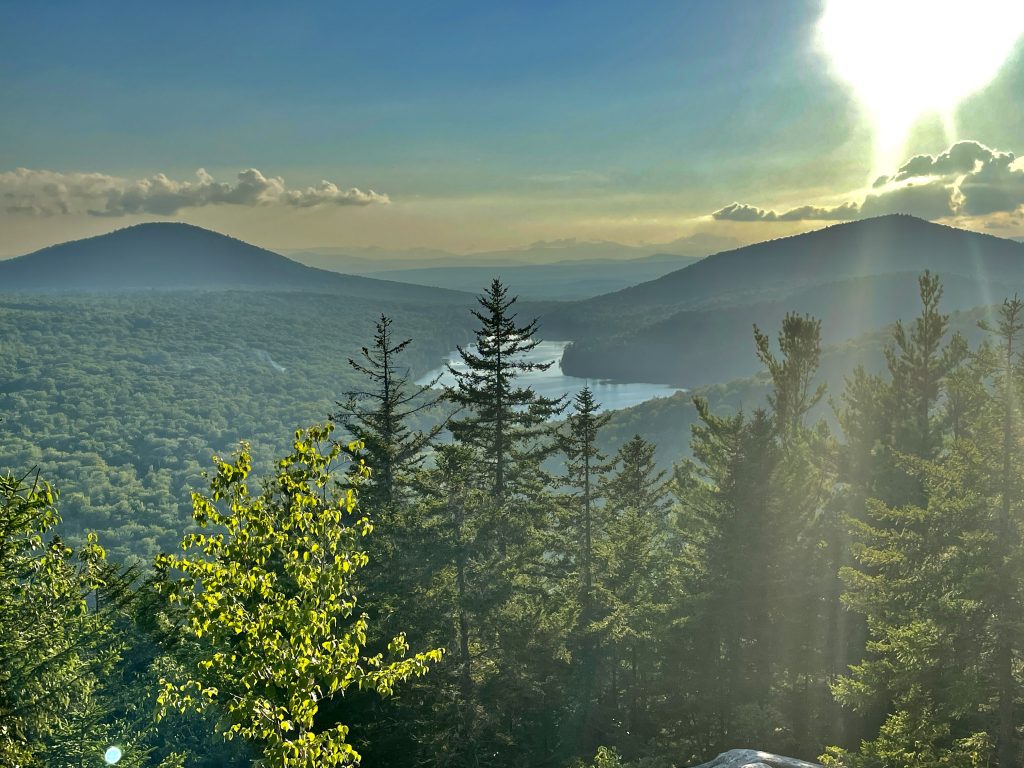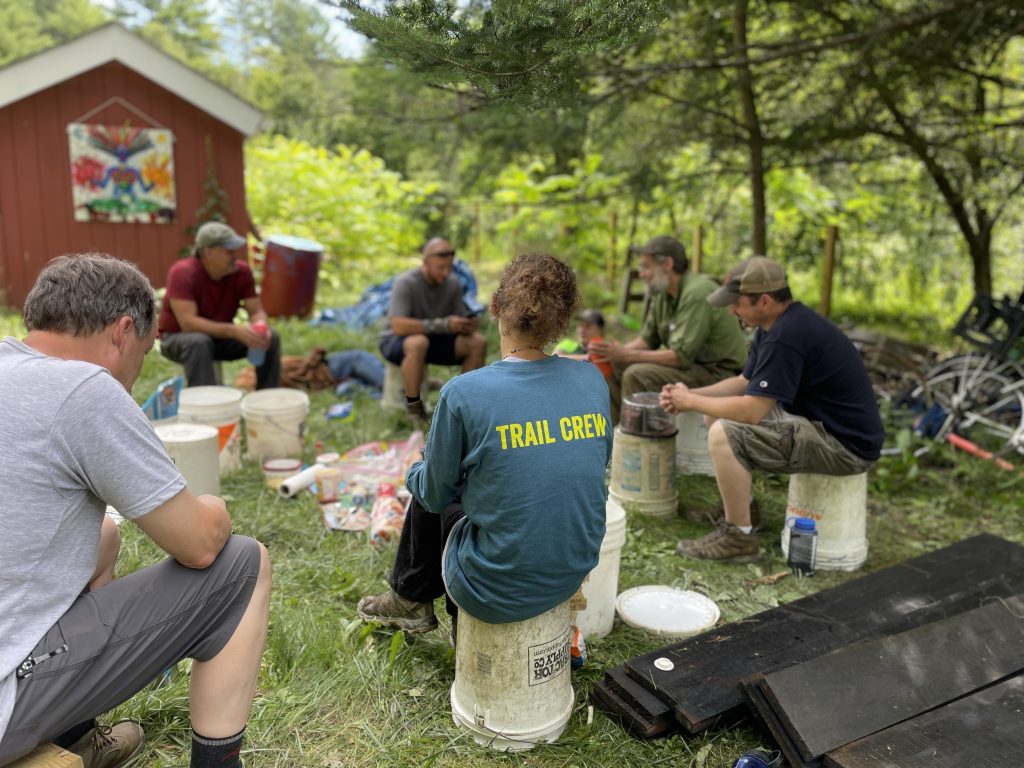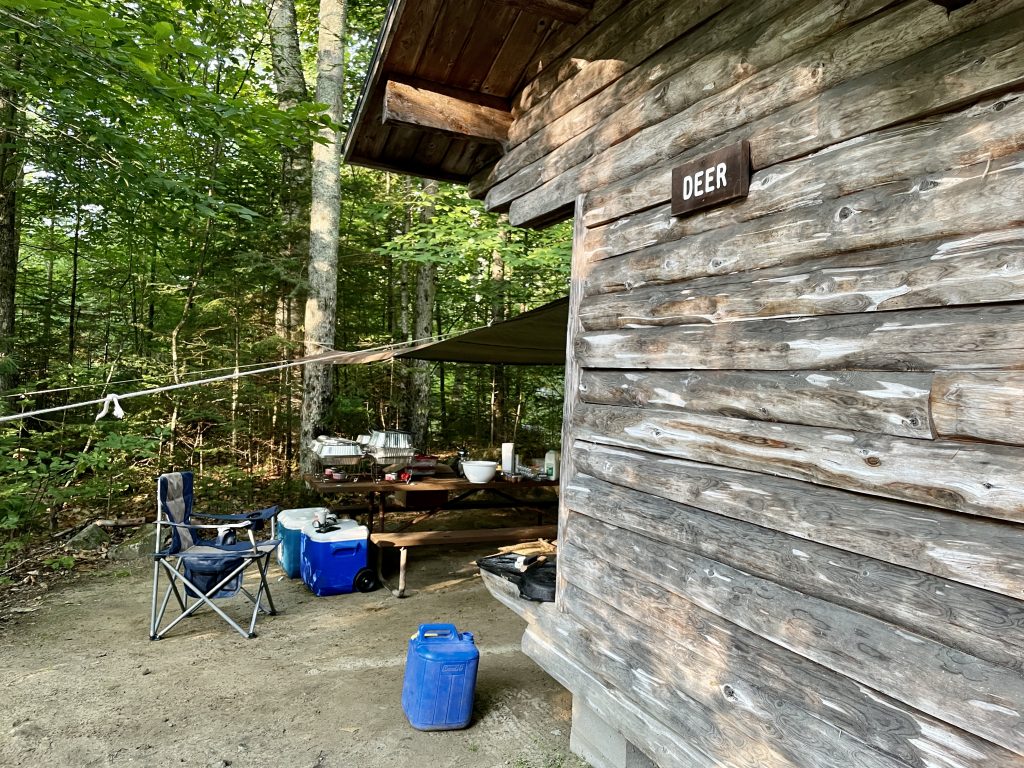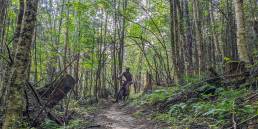The term volunteer vacation, as the name suggests, describes the combination of travel with contributing to a cause or purpose. I’d like to think we are moving towards a time, especially in the outdoor arena, where “voluntourism” becomes a fixture in the way we travel—or, at least, that we’ll be contributing in some way to the area we are visiting. What better way to learn about a place than to tend to the heart of its landscape?
After participating in a volunteer vacation this summer, I am of the mind that giving your time in a new place only enhances one’s experience. In August, I joined the American Hiking Society’s crew in Vermont’s Groton State Forest with the Cross Vermont Trail Association. The Cross Vermont Trail is a long-term project building a multi-use, four-season path across the width of Vermont, following the Winooski and Wells River Valleys. I was fortunate enough to learn about CVTA from Executive Director Greg Western, who was our project leader and someone who has been deeply involved with the project since 2006. He taught us about the scope of the project, its strategic plan, and its recent milestones—like the new Winooski Bridge in East Montpelier, a keystone link in a growing regional trail network.

This summer through fall, the American Hiking Society hosts over thirty trips across the country, from Alaska to the Adirondack Mountains, for volunteers of varying abilities. For a small fee to cover operational costs (mine was $350), participants camp with a group of 10 to 15 individuals for a week while servicing an area in the region. Other volunteer trip organizers include Wilderness Volunteers and the Appalachian Mountain Club. It’s important to note that not all trips have fees (and if they do, programs will likely work with you on financial assistance). These are only a few examples of volunteer groups that offer trips, so do a deep dive online and ask others about their experiences to see what sounds good to you.
Below, I offer up some key takeaways from the trip to help you get stoked for your first volunteer vacation, and address any hesitations you may have along the way.
1. Give Back, Anywhere
I chose Vermont for my first volunteer vacation because it was close to home—I wanted to make sure I could make the logistics work as a solo traveler, which in this case meant driving an hour to our camp. With most of these trips, though, there will often be airport pickups, carpooling, and the like, because there will be others in a similar situation. So if you’re looking to go across country for your first volunteer vacation, absolutely go for it. The other reason I chose Vermont was an obvious one—it’s beautiful. I recreate often in the White Mountains of New Hampshire and was pining for some time in the Green Mountain State. With the Green Mountains to the west and the Connecticut River Valley to the east, Groton State Forest encompasses almost 30,000 acres, one of the state’s largest publicly-owned areas, so I felt lucky to be spending the week there.
The fun part about these programs, though, is that there are so many options. If there’s a region you’ve always wanted to explore, chances are there is a trip there—an upcoming project in Moab will take you to some of the most stunning red rock landscapes on Earth, while another in Missouri will bring you along the Ozark Trail, a long distance hiking trail in Mark Twain National Forest. Perhaps there is also a place you’ve read about or is dear to you that is in need of particular care—chances are you can either suggest or organize a trip there to make it happen. The only hard decision to make when it comes to volunteer vacations is deciding on where.
2. Use Time Off to Explore
When you go on volunteer trips, you’ll likely have scheduled time off (and sometimes a guided activity offered) where you can take time to enjoy and explore what’s around you (usually the organizer will dedicate a day in the week for this). Explore the surrounding lakes and mountains as well as local communities. You’ll appreciate it that much more after a hard day’s work!

3. Meet New People
While I was looking forward to working with a team, I wasn’t expecting the magnitude of the camaraderie I built with a small group of strangers in a week. When you’re working together on difficult tasks with some pretty demanding physical labor, you have to work well together to keep the project going, and the important factor here is being a team mate that others can rely on. When I spoke with returning group members about their experience, they had shared that they come back for specific projects every year—some on their sixth and seventh consecutive year—so that they can reunite with their team and revisit projects. Towards the end of the week their reflections resonated with me; you feel a part of something bigger than yourself, and you feel invested in the project and the people that make it happen in the long term. All of this is to say, you meet some great people who have similar interests and commitments to the outdoors as you, so naturally it’s a lasting network of friendships.

4. Flexibility
While you can match your experience to the “easy-strenuous” project rating model, you can also find trips with various types of accommodations, from primitive tent sites to indoor lodging, that meet your needs and preferences (for some, not all organizations). Trips are often also broken down by the kind of hiking/access to the worksite. For instance, day hiking trips don’t require backpacking to your base, and in some situations, you may be able to drive to the trailhead at which you are working. For other trips, you are in charge of providing your own camp set up and have to be prepared to carry your gear and tools into camp. Between all of these, there is likely a trip tailor-made for you; just be sure to do your due diligence and read up on the trip details. For most trips, tools and supervision are provided by the host agency or organization. (Also note: Some companies will provide paid time off for volunteer work, match your volunteer registration fee, and even match travel expenses incurred to volunteer. Research to see to see if your company has a matching program.)

5. Good Volunteer Vibes
Membership to outdoor groups and monetary donations are huge factors ensuring the long-term success of projects. Contributing your personal time and doing the physical work not only brings a tangible understanding of those projects, but also offers an opportunity to better understand where fundraising dollars go. Being a part of trail building and maintenance is an invigorating experience that puts energy into these missions, helps spread the word, and also generates lifelong investors into the non-profits that make these trails happen. You become a steward and an advocate for the place you visit and take care of, and when multiplied by thousands of participants, that goes far. Share your volunteer trip/trail work experience below with others, and feel free to field any questions you may have about the process. Get out and give back!
Ellen Estabrook
Ellen is a social media marketer who enjoys weekends spent unplugged in the woods. With backgrounds in psychology and counseling, she has a deep gratitude for the outdoors and its role in mental health and hopes to share that with others.
Related Posts
April 24, 2024
What to Bring When Road Tripping with Your Dog
Prepare for the ultimate road trip with…




